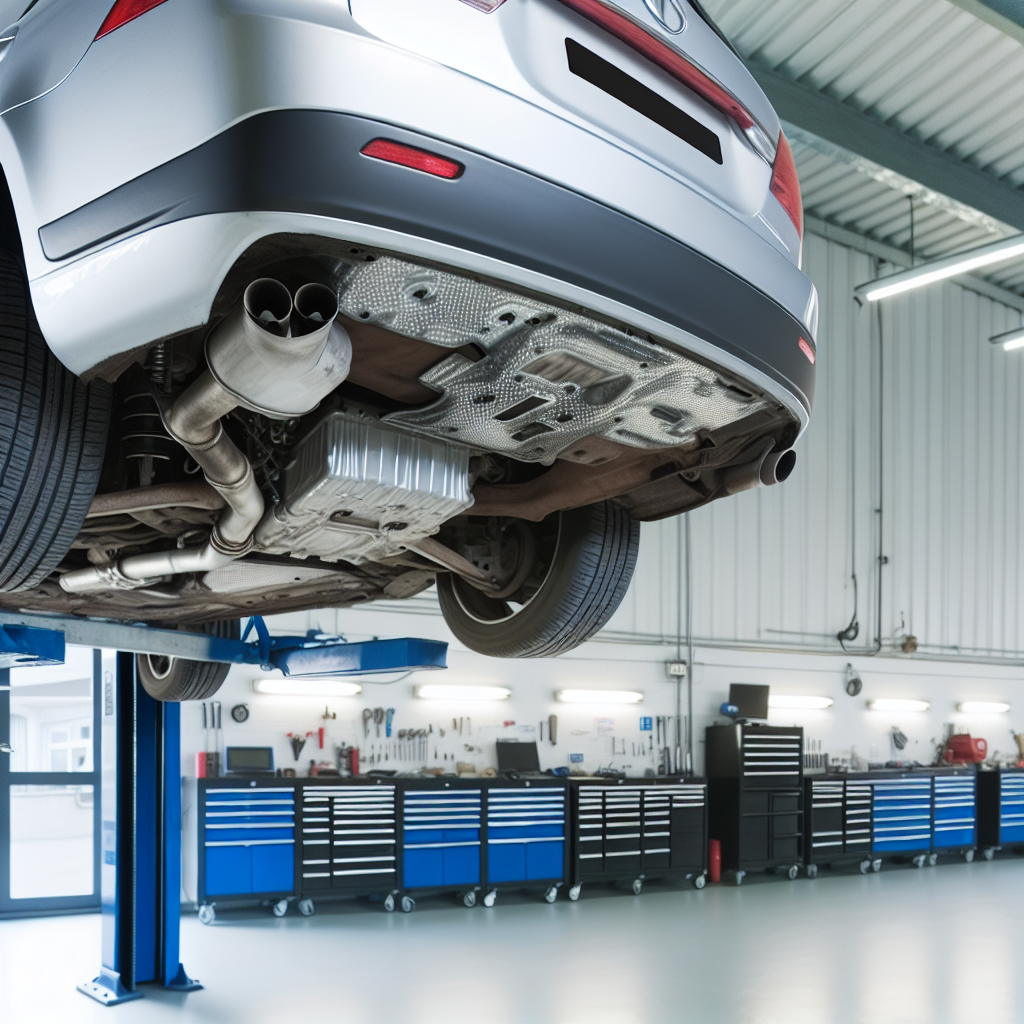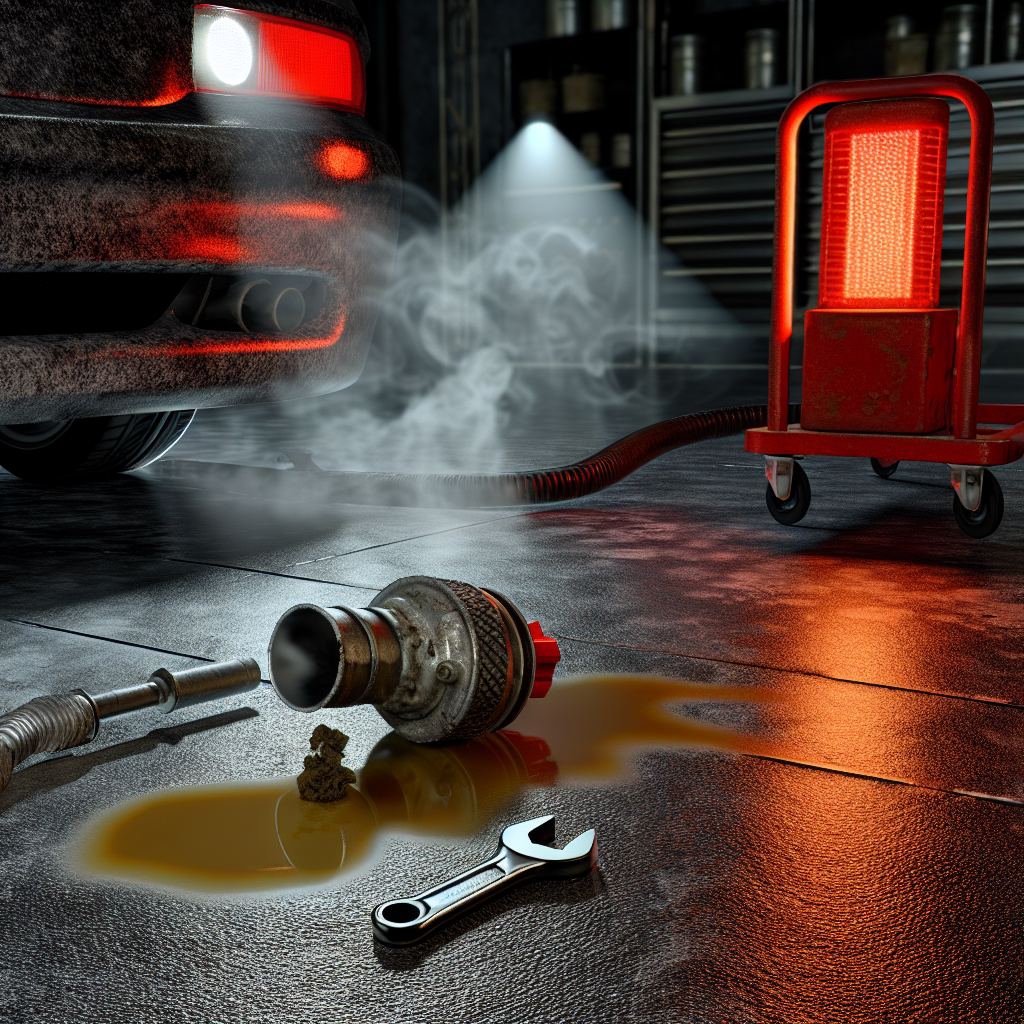Overview
This article explains that NOx sensors monitor nitrogen oxide emissions in vehicles, with manufacturers typically recommending replacement every 80,000-100,000 miles, though driving conditions, warning signs like check engine lights, and regular testing should inform maintenance decisions. Properly maintaining these sensors prevents costly repairs to catalytic converters and other systems, improves fuel efficiency, and ensures environmental compliance, making proactive replacement a wise investment rather than just an expense.
Table of Contents
- Understanding NOx Sensors: Your Vehicle’s Emissions Guardians
- Tip 1: Follow Manufacturer Recommendations Like a Roadmap
- Tip 2: Recognize Warning Signs Before Major Trouble Strikes
- Tip 3: How Your Driving Habits Shape Sensor Lifespan
- Tip 4: Implement a Smart Testing Schedule
- Tip 5: Weighing Replacement Costs Against Potential Consequences
- Conclusion: Navigating the Road to Proper NOx Sensor Maintenance
- Frequently Asked Questions
Understanding NOx Sensors: Your Vehicle’s Emissions Guardians
NOx sensors function as vigilant sentinels in your vehicle’s emissions system, silently monitoring nitrogen oxide levels in exhaust gases. These sophisticated devices are not unlike environmental detectives, constantly gathering evidence and reporting back to your engine’s control unit with crucial data. As emission standards tighten like a vise across the globe, these sensors have become indispensable components in modern vehicles.
The NOx sensor replacement interval varies by vehicle, but understanding this maintenance requirement is essential for any responsible car owner. These sensors don’t just satisfy regulatory requirements—they directly influence your engine’s performance, fuel efficiency, and long-term health.
When NOx sensors operate properly, they orchestrate a delicate symphony with your vehicle’s selective catalytic reduction system and exhaust gas recirculation components. This harmonious relationship ensures your vehicle runs as cleanly and efficiently as possible, like a well-rehearsed orchestra performing at its peak.
However, when these sensors falter, the consequences ripple throughout your vehicle’s systems faster than oil through an engine. From diminished fuel economy to failed emissions tests and potential damage to your catalytic converter, a malfunctioning NOx sensor can quickly transform from a minor issue into a major headache—and a significant hit to your wallet.
Tip 1: Follow Manufacturer Recommendations Like a Roadmap

The foundation of proper NOx sensor maintenance begins with manufacturer guidelines. These aren’t arbitrary suggestions tossed into your owner’s manual—they’re carefully calculated intervals based on extensive testing and engineering expertise. Think of them as your vehicle’s personalized maintenance prescription, tailored specifically to its unique design and operating parameters.
Most manufacturers recommend NOx sensor replacement every 80,000 to 100,000 miles, though this range fluctuates significantly between makes and models like temperature changes across seasons. Luxury vehicles and diesel engines typically have more frequent replacement intervals, sometimes as early as 60,000 miles, while some economy models might stretch beyond 120,000 miles before requiring attention.
Finding this information is straightforward. Your owner’s manual contains a maintenance schedule that includes sensor replacement recommendations, laid out like a roadmap for your vehicle’s journey. Alternatively, most manufacturers provide this information online through owner portals or directly through dealership service departments.
When reviewing these guidelines, pay special attention to any footnotes or exceptions related to driving conditions. Manufacturers often provide different maintenance schedules for “normal” and “severe” driving conditions—with city driving, short trips, extreme temperatures, or dusty environments typically falling into the latter category, requiring more frequent sensor attention.
Tip 2: Recognize Warning Signs Before Major Trouble Strikes
Like the first raindrops before a downpour, failing NOx sensors typically provide warning signs before complete failure. The most obvious indicator is an illuminated check engine light, often accompanied by specific diagnostic trouble codes when scanned. These codes, including P0130-P0153, P2200, or P2201, point directly to NOx sensor issues like signposts on a highway.
Beyond dashboard warnings, you might notice your vehicle’s performance gradually deteriorating. Poor fuel economy—like a previously thirsty car suddenly becoming parched—can indicate sensor issues. Rough idling that makes your car shudder like it’s standing in winter cold, hesitation during acceleration as if your car is second-guessing itself, or unusual exhaust smoke can all signal sensor problems.
For diesel vehicles, you might experience issues with the diesel exhaust fluid quality systems, sometimes accompanied by warning messages about reduced power or DEF system problems. These warnings shouldn’t be ignored any more than you would ignore chest pain—what begins as a minor issue can quickly escalate into something far more serious.
When these warning signs appear, prompt diagnostic attention can save both your vehicle and your wallet from unnecessary strain. Many drivers make the costly mistake of ignoring initial symptoms, hoping they’ll resolve themselves—but sensor issues typically worsen over time, potentially causing damage to other components and resulting in more extensive repairs.
Tip 3: How Your Driving Habits Shape Sensor Lifespan
Your driving habits and environment impact NOx sensors as dramatically as diet affects human health. Sensors in vehicles primarily driven on short trips tend to degrade faster, as these brief journeys don’t allow exhaust systems to reach optimal operating temperatures. This creates a perfect breeding ground for moisture and contaminant buildup—natural enemies of sensor longevity that corrode components like rust attacking metal.
By contrast, regular highway driving often extends sensor life, allowing exhaust systems to thoroughly heat up and burn off potential contaminants. Think of it as the difference between rarely exercising versus maintaining regular activity—one leads to premature deterioration while the other promotes longevity.
Environmental factors play equally important roles in sensor health. Extreme temperatures, high humidity, and road salt accelerate corrosion and sensor degradation like time-lapse photography speeds up natural processes. Vehicles in coastal areas face additional challenges from salt air, while those in industrial zones contend with higher levels of airborne contaminants.
If your daily commute consists primarily of stop-and-go traffic in harsh conditions, consider reducing your replacement intervals by 15-20% from the manufacturer’s recommendations. Conversely, if you’re regularly cruising highways in moderate climates, you might safely extend intervals slightly—though never beyond manufacturer specifications. This strategic adjustment, based on your specific driving profile, helps balance maintenance costs against the risk of premature failure.
Tip 4: Implement a Smart Testing Schedule
Between replacements, regular testing provides invaluable insights into your NOx sensors’ health, much like periodic medical check-ups catch potential issues before they become serious. Professional diagnostic testing every 15,000-20,000 miles offers an excellent balance between vigilance and practicality, allowing you to monitor sensor performance without excessive maintenance costs.
While DIY testing options exist for the mechanically inclined, professional diagnostics provide more comprehensive evaluations. Most reputable automotive shops can perform NOx sensor function tests for $50-$120—a modest investment compared to the $300-$500 typically required for sensor replacement, not counting potential damage from delayed maintenance.
When interpreting test results, look beyond simple “pass/fail” designations. Response time, signal quality, and comparison with manufacturer specifications provide deeper insights into remaining sensor life, allowing you to plan replacements during convenient service intervals rather than emergency situations that disrupt your schedule like an unexpected storm.
Consider coordinating NOx sensor testing with other routine maintenance visits, such as oxygen sensor replacement interval checks or emissions system inspections. This approach, recommended by EPA vehicle emissions guidelines, maximizes efficiency and minimizes shop visits, saving both time and money while ensuring your emissions system receives comprehensive attention.
Tip 5: Weighing Replacement Costs Against Potential Consequences

NOx sensor replacement costs vary widely across vehicle types—economy vehicles typically range from $250-$400 per sensor, while luxury or diesel vehicles can command $400-$700 or more. Labor adds another $80-$200 depending on location and complexity, with some high-end vehicles requiring extensive disassembly to access sensor locations.
These figures might seem substantial, but they pale in comparison to the potential consequences of procrastination. Damaged catalytic converters ($1,000-$2,500), compromised EGR systems ($300-$800), or failed emissions tests can quickly multiply your expenses like rabbits in springtime. According to CarMD’s Vehicle Health Index, ignoring emissions system warnings often leads to repair costs three times higher than addressing issues promptly.
Beyond financial considerations, environmental impact deserves attention. Malfunctioning NOx sensors can increase your vehicle’s emissions by 20% or more, contributing unnecessarily to air pollution like a leaky faucet wastes water. In regions with emissions testing, this can translate to regulatory headaches that compound the financial burden—including potential registration denial and fines.
Some drivers attempt to save money by installing aftermarket sensors, which typically cost 20-40% less than OEM components. While this approach can reduce immediate expenses, aftermarket sensors sometimes deliver shorter lifespans or less precise readings. For most vehicles, OEM sensors provide the best balance of reliability and performance, especially for newer models with sophisticated emissions systems as detailed by Transport Policy research.
Conclusion: Navigating the Road to Proper NOx Sensor Maintenance
Maintaining your vehicle’s NOx sensors requires a balanced approach—neither neglecting these critical components nor replacing them prematurely. By understanding manufacturer recommendations, recognizing warning signs, adjusting for your unique driving conditions, implementing regular testing, and weighing the true costs of delayed maintenance, you can develop a sensor replacement strategy as precise as the sensors themselves.
Think of NOx sensor maintenance as an investment in your vehicle’s future rather than an expense. Properly functioning sensors not only ensure environmental compliance but also optimize performance, maximize fuel efficiency, and prevent costly damage to related systems. Like changing oil or rotating tires, NOx sensor replacement has become an essential aspect of modern vehicle care—one that rewards attention and punishes neglect with equal measure.
The next time your vehicle reaches its NOx sensor replacement interval, remember that this maintenance item isn’t just another line on a service invoice—it’s a critical component of your vehicle’s health and environmental responsibility. By addressing sensor maintenance proactively, you’re not just protecting your investment; you’re contributing to cleaner air and more sustainable transportation for everyone sharing the road.
With these five tips in your maintenance toolkit, you’re well-equipped to make informed decisions about NOx sensor replacement intervals—decisions that will keep your vehicle running smoothly, efficiently, and cleanly for many miles to come.
Frequently Asked Questions
How often should NOx sensors be replaced?
Most manufacturers recommend replacing NOx sensors every 80,000 to 100,000 miles, though this varies by vehicle make and model. Luxury and diesel vehicles often require more frequent replacement, sometimes as early as 60,000 miles.
How much does NOx sensor replacement typically cost?
NOx sensor replacement typically costs between $250-$400 for economy vehicles and $400-$700+ for luxury or diesel vehicles, plus $80-$200 for labor. Total costs vary depending on vehicle make, model, and whether you’re using OEM or aftermarket parts.
What happens if I ignore a failing NOx sensor?
Ignoring a failing NOx sensor can lead to reduced fuel efficiency, engine performance issues, and potential damage to your catalytic converter. You may also fail emissions tests and face more expensive repairs down the road.
Can I replace a NOx sensor myself?
While technically possible, DIY NOx sensor replacement requires specialized tools and diagnostic equipment to ensure proper calibration. For most vehicles, professional installation ensures proper functionality and prevents potential damage to sensitive components.
Will a faulty NOx sensor always trigger a check engine light?
In most modern vehicles, a faulty NOx sensor will eventually trigger a check engine light, though not always immediately. Some sensors may deteriorate gradually, affecting performance before triggering warning lights.

